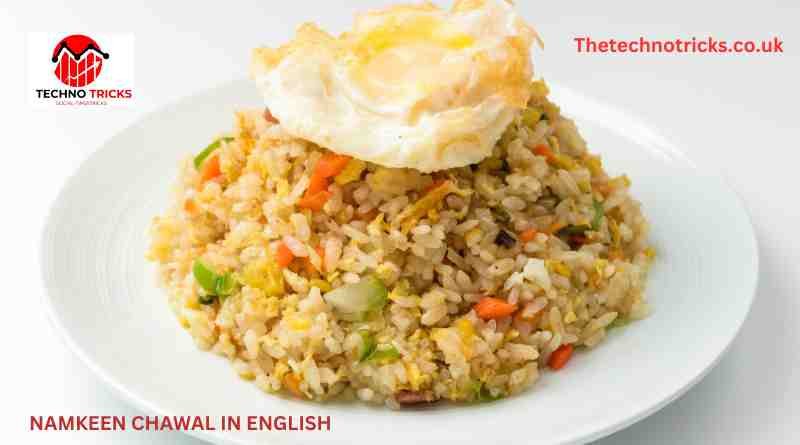Namkeen Chawal in English
Namkeen Chawal, a beloved Indian dish, is a flavorful and aromatic rice preparation that brings together the richness of Indian spices and the simplicity of rice. This article aims to provide a detailed, step-by-step guide to making Namkeen Chawal, making it accessible to those who prefer recipes in English. Whether you’re a seasoned cook or a beginner, this guide will help you master this delicious dish.
Introduction to Namkeen Chawal
Namkeen Chawal, literally translating to “savory rice,” is a staple in many Indian households. It’s a versatile dish that can be enjoyed as a main course or as a side dish. Traditionally made with a variety of spices, vegetables, and sometimes meat, Namkeen Chawal is known for its robust flavors and fragrant aroma. It’s a dish that can be easily customized to suit individual tastes, making it a favorite among families.
Ingredients Needed for Namkeen Chawal
Before diving into the cooking process, it’s essential to gather all the necessary ingredients. Here’s a list of what you’ll need:
- Rice: 1 cup of basmati rice or any long-grain rice
- Vegetable Oil or Ghee: 2 tablespoons
- Cumin Seeds: 1 teaspoon
- Mustard Seeds: 1 teaspoon
- Bay Leaf: 1
- Cinnamon Stick: 1 small piece
- Cloves: 2-3
- Cardamom Pods: 2
- Onion: 1 large, finely chopped
- Green Chilies: 2, slit lengthwise
- Ginger-Garlic Paste: 1 tablespoon
- Tomato: 1 large, finely chopped
- Mixed Vegetables: 1 cup (peas, carrots, beans, and potatoes)
- Turmeric Powder: 1/2 teaspoon
- Red Chili Powder: 1/2 teaspoon
- Garam Masala: 1 teaspoon
- Salt: To taste
- Water: 2 cups
- Fresh Coriander Leaves: A handful, chopped, for garnish
Step-by-Step Cooking Process
1. Preparing the Rice
Start by washing the rice thoroughly under cold water until the water runs clear. This step is crucial as it removes excess starch, preventing the rice from becoming sticky. Once washed, soak the rice in water for about 20-30 minutes. This soaking helps in achieving the perfect texture for the Namkeen Chawal.
2. Sautéing the Spices
In a large pan or pressure cooker, heat the oil or ghee over medium heat. Add the cumin seeds, mustard seeds, bay leaf, cinnamon stick, cloves, and cardamom pods. Sauté these spices for a minute or until they release their aroma. This step infuses the oil with the flavors of the spices, forming the base of your dish.
3. Cooking the Vegetables
Add the finely chopped onions to the pan and sauté until they turn golden brown. This may take about 5-7 minutes. The caramelization of onions adds a deep flavor to the Namkeen Chawal. Next, add the green chilies and ginger-garlic paste. Sauté for another 2-3 minutes until the raw smell of the ginger and garlic disappears.
Now, add the chopped tomatoes and cook until they become soft and mushy. This should take about 4-5 minutes. The tomatoes add a tangy sweetness that balances the spices. After the tomatoes are cooked, add the mixed vegetables. You can use fresh or frozen vegetables depending on availability. Stir well and cook for another 5 minutes.
4. Adding the Spices
Once the vegetables are slightly tender, add the turmeric powder, red chili powder, garam masala, and salt. Mix everything well to ensure the vegetables are coated evenly with the spices. Cook for another 2-3 minutes, allowing the spices to blend into the vegetables.
5. Cooking the Rice
Drain the soaked rice and add it to the pan. Gently stir to mix the rice with the vegetable-spice mixture. Be careful not to break the rice grains. Pour in 2 cups of water and give it a good stir. Bring the mixture to a boil.
Once it starts boiling, reduce the heat to low, cover the pan with a lid, and let it simmer for about 15-20 minutes. If using a pressure cooker, cook until you hear one whistle, then turn off the heat and let the pressure release naturally.
6. Final Touches
After the rice is cooked, let it sit covered for another 5-10 minutes. This resting period allows the flavors to meld together. Fluff the rice gently with a fork to separate the grains. Garnish with freshly chopped coriander leaves before serving.
Serving Suggestions
Namkeen Chawal can be served with a variety of accompaniments. Here are a few suggestions:
- Raita: A cooling yogurt-based side dish that complements the spicy flavors of Namkeen Chawal.
- Pickles: Indian pickles add a tangy and spicy kick that enhances the overall meal.
- Papad: Crispy papadum or papad is a great crunchy side.
- Salad: A simple cucumber and onion salad with a squeeze of lemon adds freshness to the meal.
Variations of Namkeen Chawal
While the basic recipe remains the same, there are several variations you can try:
- Chicken Namkeen Chawal: Add marinated chicken pieces to the recipe for a protein-packed version.
- Paneer Namkeen Chawal: Add cubes of paneer (Indian cottage cheese) for a vegetarian protein option.
- Dry Fruits: Add cashews and raisins for a rich and festive touch.
- Mint Flavored: Add a handful of fresh mint leaves along with coriander for a refreshing twist.

Nutritional Benefits
Namkeen Chawal is not only delicious but also nutritious. Here are some of the health benefits:
- Rice: Provides carbohydrates for energy.
- Vegetables: Add vitamins, minerals, and fiber.
- Spices: Contain antioxidants and have anti-inflammatory properties.
- Protein Options: Chicken or paneer adds necessary protein for muscle repair and growth.
Conclusion
Namkeen Chawal is a delightful dish that brings the essence of Indian flavors to your table. It’s a versatile recipe that can be adapted to suit different tastes and dietary preferences. With this detailed guide, making Namkeen Chawal in English becomes a straightforward and enjoyable process. Whether you’re cooking for your family or hosting a dinner party, this dish is sure to impress and satisfy.
Experiment with different variations and accompaniments to make this dish your own. Happy cooking!
Read also: check




